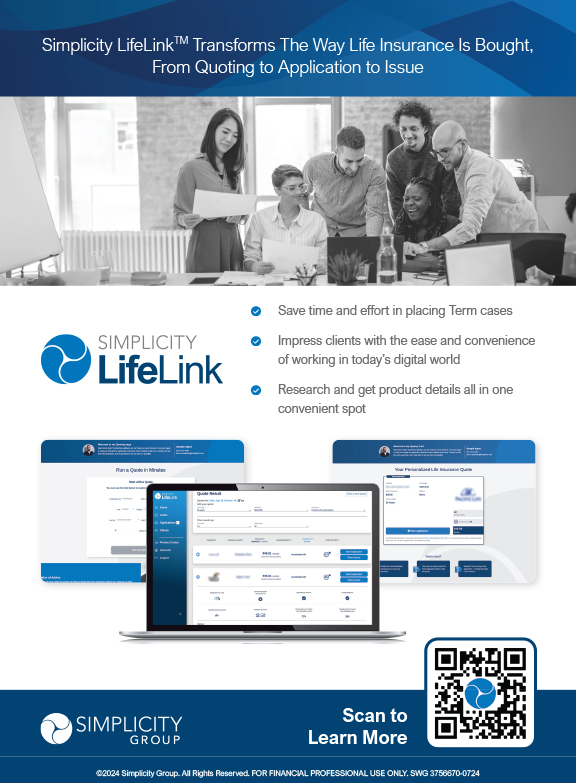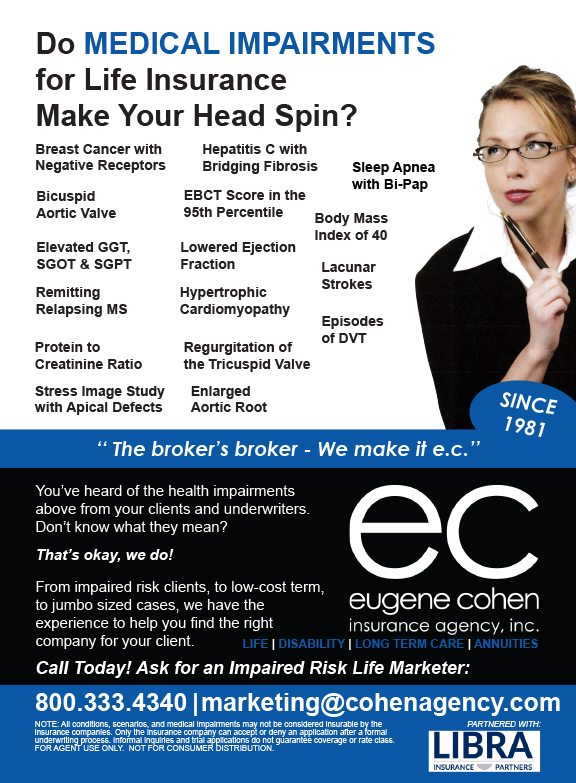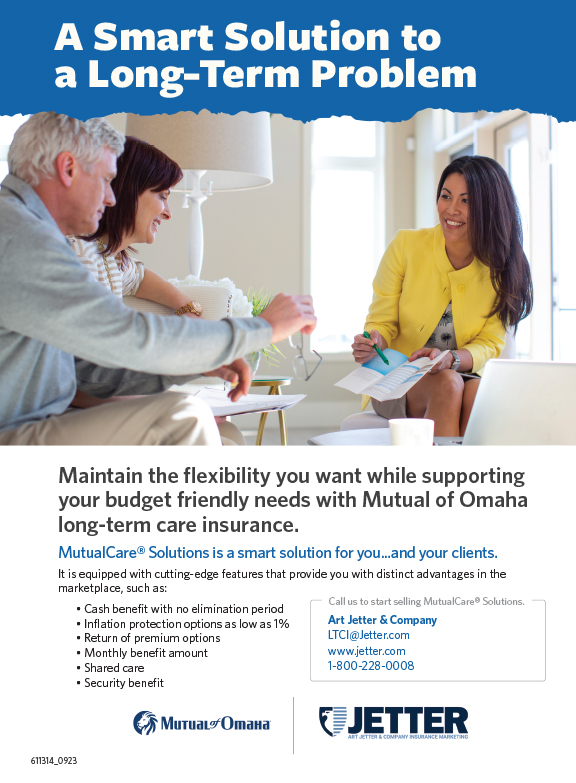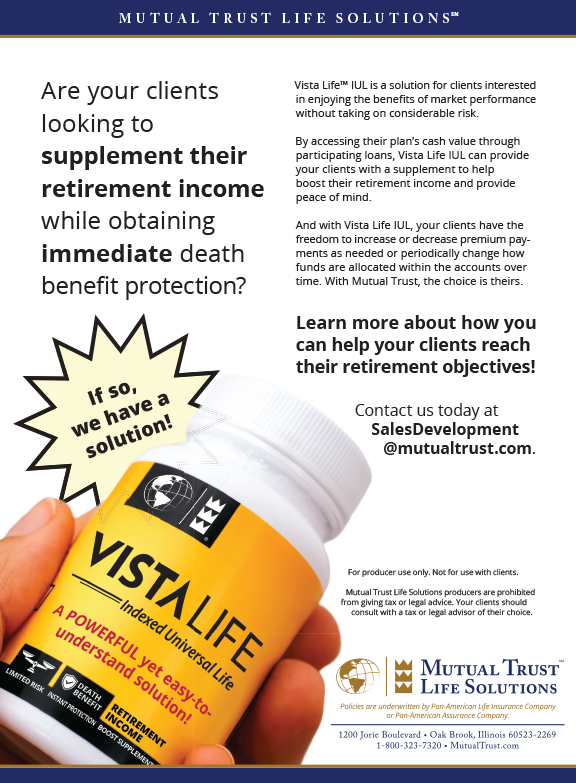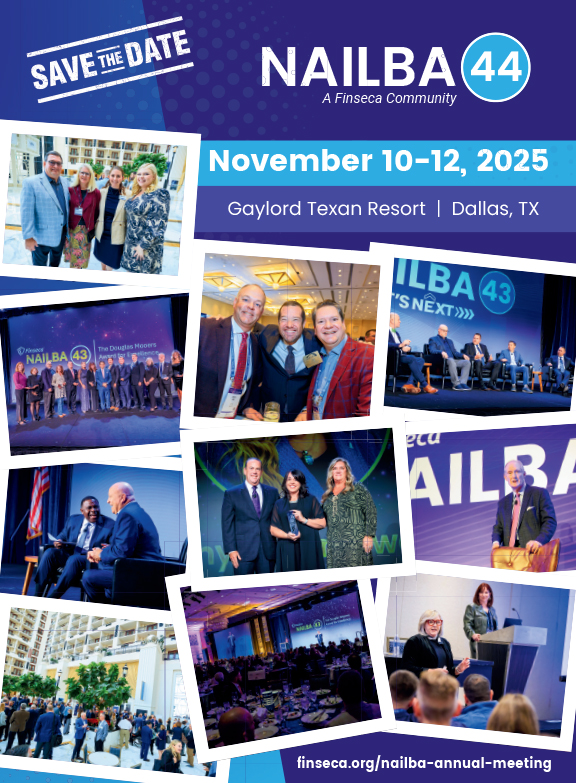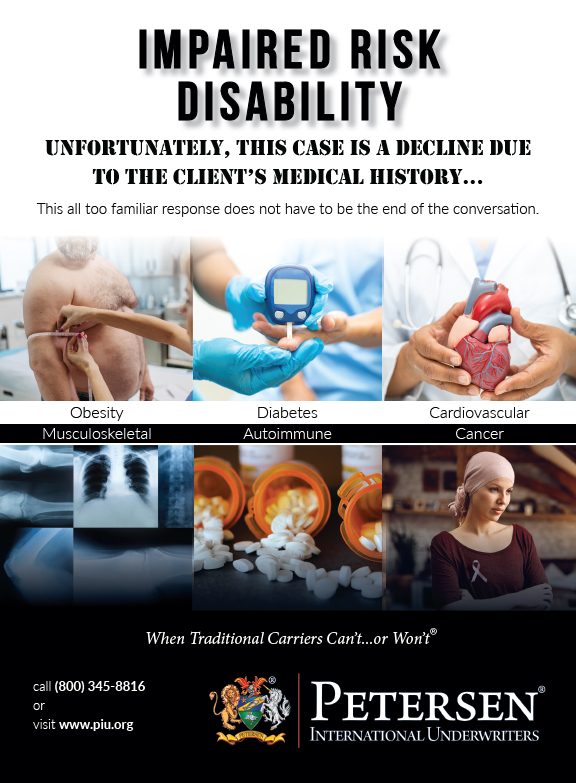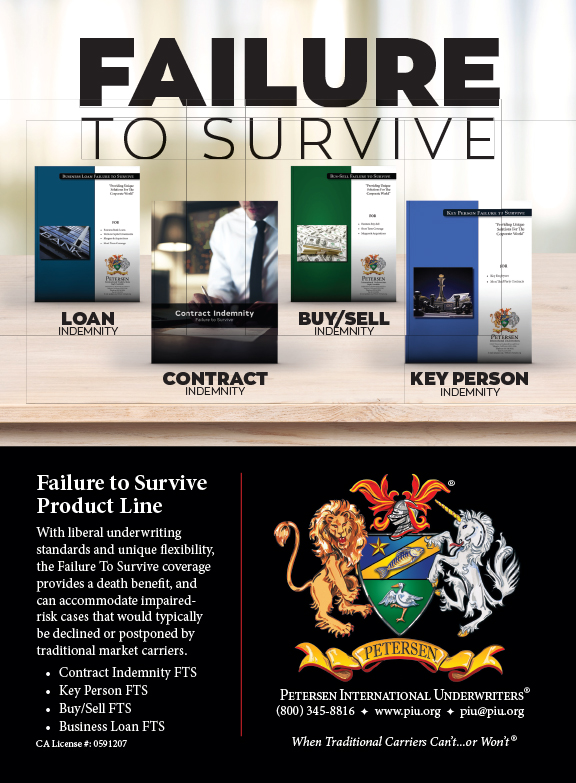Wouldn’t it be great to have the key to the door you’re trying to open?
For years agents have said that they are in the “business market,” but what does that really mean? Are they taking the right approach? Are they truly in that marketplace?
When approaching a business owner, what are you asking? The same questions they have been approached with 100 times before? “Do you have a plan in place if something were to happen to you or one of your partners?” “Do you have a 401(k) ?” “What are you doing for retirement?” “Do you have a succession plan?”
These questions will typically go in one ear and out the other so quickly. Why? Because business owners know it (you) will cost them money, which is not any business owner’s intent. A different approach and conversation starter should be: “When is the last time you had a proper business valuation?” Business valuations are the cornerstone of beginning the process toward uncovering the answers to the above and many other questions in a way that is not unwelcome. You are coming in under a consultative role, and during that process you will uncover areas of weakness where business owners are exposed to severe tax consequences. Essentially, you are saving them money in the long run. The true sales opportunities will organically come to the surface.
The reality is that most times businesses don’t have a valuation in place, or they simply have a number in mind that has been derived with no real methodology behind it. Without a proper valuation, business owners open themselves—or should we say their heirs—to a host of planning nightmares.
An undervalued business interest can result in huge tax liabilities and/or business succession and continuation issues. In some cases, through strategic alliances, it is possible to provide an initial business valuation without cost to the business owner. It is important to align yourself with firms that can provide access to these platforms. This will significantly increase your value proposition to your current and prospective client base.
By offering this initial no-fee service, it is hard for a qualified prospect to say no. Once this first level of service is provided, a number is generated that is either:
• Exactly what the client thought their business was worth;
• Less than what they thought; or
• Higher than they thought.
Regardless of the outcome, there is a planning opportunity that awaits you. You now have a road map that will lead you to the planning stages and implementation of products to solve a number of planning issues that will likely be uncovered during the process. Plus, from a financial underwriting standpoint, you’ll know exactly what the client will qualify for before you even get to the application stage.
Some of the opportunities that can be uncovered:
• Buy/Sell Sales. Often there are partners involved in the business setting. Once determined, the conversation ensues about the implementation or review of a current formal agreement.
• Key Employee Retention. During the process, key employees are identified, as is the effect that the loss of each can potentially have on the business. Strategies can be implemented to protect the business in a number of ways, through death benefit if that person prematurely passes and/or the design of “golden handcuff” type benefits that can be used for retention of that employee. Perhaps a deferred compensation program or an executive bonus Section 162.
• Succession Planning. You can uncover the need for succession planning to assure the continuation of that business for the next generation. This is a very important element that comes up often during the process.
• Estate Equalization. Perhaps there is a family business in which only some of the children are involved. The father of two siblings wanted to make sure that both of the children would inherit equal shares in the family business. The problem was that the son had been working with his father over the last five years and had significantly grown the business, while the daughter wanted nothing to do with it. As you can imagine, this could cause a lot of bad blood in the family. In our example, estate equalization sales allow for a life insurance policy to be purchased on the life of the father so that his daughter would receive what amounted to her equal share of the business without causing friction between the two siblings.
• Personal Financial/Estate Planning. Often the largest asset that a business owner has is the business. Now that you know what it’s worth you can transition toward the personal needs of the individual, including income continuation, estate planning, retirement planning, etc.
This next section will discuss some techniques on how to best utilize living benefits to assist your business clients. Living benefits such as long term care and chronic illness riders are fairly new to the industry. These riders offer unique solutions in this marketplace. There are various ways they can be applied.
Living Benefits in Business Planning
As indicated previously, buy/sell planning, or lack thereof, can be an area that may be exposed as a weakness. Many advisors focus on funding buy/sell agreements with life insurance and stop there. But what if a business partner is incapacitated due to a serious illness or injury? Believe it or not, this can actually have a greater impact on a business than a premature death. Statistically this is more likely to occur, and it is why most disability income policies are so expensive compared to the premiums on those same partners who buy large amounts of term life insurance to fund a buy/sell agreement.
One of the most interesting product innovations has made itself an attractive business planning tool when dealing in this area. Permanent life insurance plans can now be purchased with long term care riders (LTCRs) or chronic illness riders (CIRs). By utilizing these products the life insurance that is often sold to fund a buy/sell agreement can have an LTCR or CIR attached. If one of the covered partners has a serious health event due to illness or injury, the business can accelerate the death benefits via the provisions of these types of riders. The funds can be utilized in a number of ways, including providing lost revenue to the business while the partner is incapacitated or, in extreme examples, as a “disability buy-out.”
The major point is that these products can make it easy to sustain a business through a major event other than death. In order to receive benefits under these types of plans, the insured party must meet certain criteria. In most cases the trigger is either the inability of that person to perform two of six activities of daily living (ADLs) or the diagnosis of a cognitive impairment. There are typically waiting periods associated with these provisions, but keep in mind that we are protecting against catastrophic loss. Shorter term health events would simply not have as great an impact on a business.
From a sales perspective, keep in mind that LTCRs and CIRs are typically available only on permanent products, not term insurance that is more widely used to fun buy/sell agreements. As the clients understand the full circle of benefits provided, this will have a significant impact on compensation as you migrate to more permanent product sales.
The next type of living benefit to focus on is the use of the cash value within permanent life insurance plans and how they can be utilized for supplemental retirement planning. For years they have provided a unique niche to advisors who understand the market. The power of what these products provide is probably more relevant today than it ever has been. It is often overlooked and/or misunderstood. So let’s take a look at the fundamental benefits provided by these plans.
Supplemental Retirement Planning
For years one of the most attractive benefits to a business owner has been the ability to put as much money away for retirement as possible. Unfortunately for most, they are limited in terms of qualified plan contributions. Cash value life insurance is still one of the best ways to supplement their retirement nest eggs.
Regardless of what plan is used—whole life, current assumption universal life or indexed universal life—they all have something in common: tax deferral and ultimate tax-free withdrawals.
Typically there is no limit on premium contributions other than a budget that is affordable to the client. It is up to you as the advisor to maximize the benefits they will be getting by paying close attention to things like modified endowment contract (MEC) limits so the client can take full advantage of a properly structured plan. Permanent life insurance continues to be one of the best time-tested vehicles for a client’s money. Here’s an example of how a typical permanent plan can work to one’s advantage. For this example, we are showing a whole life product and what it may look like:
As you can see, a $20,000 premium payment is being made every year. An initial death benefit of $838,210 is provided. The guaranteed cash value by year 10 is equal to premiums paid and not only keeps pace as the years go by but also exceeds the sum of the premiums.
Dividends are being earned all the while, and the returns are significant enough when compared to an outside investment assuming a net growth of 4 percent each and every year. All things being equal, we show a tax-free income starting at age 65 of $41,244 payable to age 100, or $56,239 payable to age 85.
Most important, the death benefit that started at $838,210 has grown to more than $1.8 million by age 65. If this client died anytime along the way, the corresponding death benefit would be paid to his beneficiary—that’s the “fast-forward” button that people often overlook. Unlike any other retirement vehicle, the money will be there even if the client is not.
That’s a pretty powerful and compelling approach, but unfortunately it is not widely used by most advisors. Surprisingly, when the question “Why don’t you sell this type of product?” was asked, the most common answer was, “I wasn’t aware it could do all that!”
As you have seen, there are many ways a business valuation can uncover sales opportunities. We have taken a glimpse at some of them. The real question is, “How are you approaching business owners, and are you truly in the business market?”
Asking the typical questions that have been asked over and over again is just not as effective as asking “When was the last time you had a proper business valuation?” If you start off with this approach, not only will you open doors but you will also have the key.










